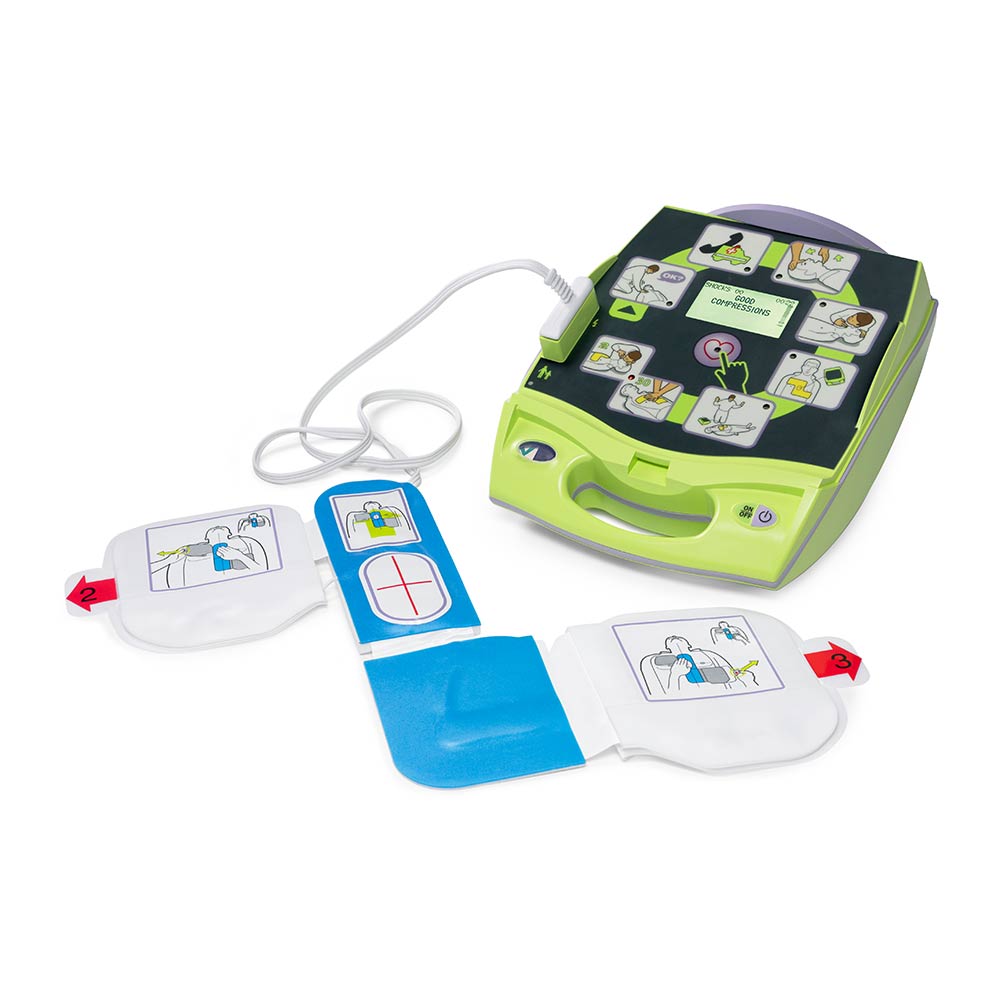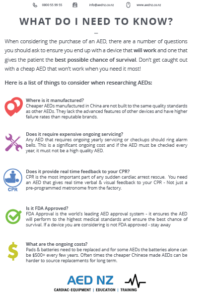
Beyond the basic maintenance tasks, here are extra tips to ensure your AED is always ready for a rescue:
-
Register Your AED with Emergency Services: In New Zealand, you can register your defibrillator with St John’s 111 AED registry. By doing so, ambulance call takers can quickly direct a 111 caller to your AED if an emergency happens nearby – find out more here: stjohn.org.nz.
-
Make the AED Easy to Find: An AED can’t save a life if nobody knows where it is. Post clear AED signage (the universal green heart-with-lightning-bolt symbol) around your facility to point people to the device. Ensure the AED isn’t hidden in a drawer or behind locked doors during normal hours. In public venues, its location should be obvious to visitors and staff alike. Visibility and accessibility are actually part of effective AED maintenance – it’s about maintaining readiness, not just the hardware.
- Train Key Individuals: While AEDs are designed for anyone to use, it builds confidence to have trained personnel. Make sure certain staff members or family members know how to use the AED and perform CPR. Regular first aid training (refresher courses every couple of years) is highly recommended. Trained responders will also be more diligent in doing routine checks and maintenance. Even a short orientation for new employees on where the AED is and how to check its status light can be valuable.
-
Keep Records and Schedule Checks: Treat your AED like other safety equipment (fire extinguishers, etc.) by keeping a simple maintenance log. Record the dates of your inspections, pad/battery replacements, software updates (if any), and any observations. This documentation is useful for compliance and ensures no one assumes someone else has done the check. It also helps in workplaces to demonstrate due diligence in health & safety audits. Many organisations in NZ include AED checks in their monthly or quarterly safety checklist – a great habit to adopt.
-
Spare Supplies: Consider keeping spare electrode pads and a backup battery on hand, especially if you are in a remote area far from suppliers. If your AED is used once, it will be out of service until pads are replaced; having spares means you can restore it to readiness immediately after an incident. At minimum, know the process to order replacement parts quickly – order replacements for ZOLL AEDs here: ZOLL – AED NZ Online Store
-
Stay Updated: If the manufacturer issues any software updates, recall notices, or upgrades for your model, be sure to follow up. Register your AED purchase with the manufacturer or local distributor so you receive any safety bulletins. This is part of compliance as well – keeping the device updated to the latest standards. For instance, changes in resuscitation guidelines (which happen every few years via ANZCOR/NZ Resuscitation Council) might lead to AED firmware updates or recommended pad changes. Staying informed ensures your device continues to meet the latest recommendations.
By implementing these tips, you can have confidence that your AED will be rescue-ready at all times – meaning it’s functional, accessible, and primed for use in a heartbeat.

